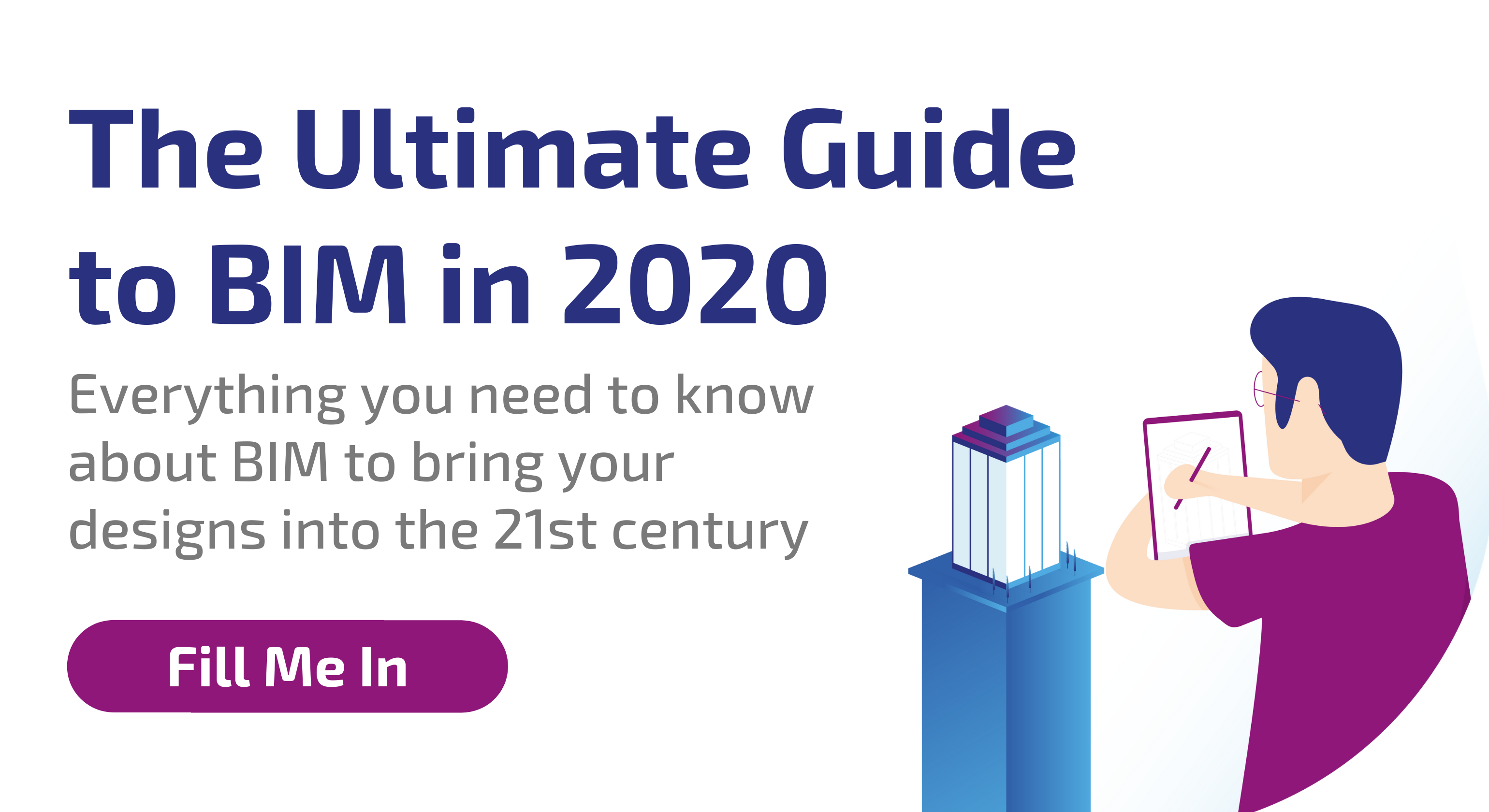2020 trends in digital architecture

2020 turned out to be a more transformative year than anyone suspected. The way we work, live and collaborate will likely never go back to exactly the way it was. In architecture, there was already change afoot. Social distancing may have accelerated adoption of cloud-based technologies and remote workflows, but most of the changes that will hit the industry this year were already underway.
Technology has always impacted how architects work and the buildings they create. Whether it’s pushing the boundaries of what’s possible or what’s efficient, construction projects often sit at the forefront of technological development. The digital age has been no exception, and the architecture's journey from hand-drawn diagrams to CAD has been dramatic.
The last ten years have laid the foundations for another shift. The adoption of 3D CAD and then Building Information Modelling (BIM) has created new possibilities for collaboration and design. The Internet of Things (IoT) and reality capture technologies are transforming what data collection is possible. With market maturation and innovations in technology, high-tech is changing into accessible technologies in architectural design. That is what we will discuss here: 2020 trends in digital architecture.
1. True collaborative BIM
BIM has been mandatory on government-funded construction products in the UK since 2016. Since then, adoption has grown from under 50% to nearly 70%. It’s predicted that by the end of the year this number could breach 90%. But these figures mask a more transformational change. BIM Level 2, covered by ISO 19659-1 and ISO 19659-2 since 2019, only mandates the creation of a common data environment (CDE). BIM was always meant to go much further.
The 2002 AutoDesk white paper ‘Building Information Modeling’ that popularised the term, set out a strategic vision for digital collaboration in construction. The central premise of BIM wasn’t common file types and cloud-based files sharing, it was a process of collaboration enabled by the creation of a database-first planning environment. That means architects can access plans, sections and elevation; structural engineers can use framing and bracing diagrams; construction teams get their isometric views. But rather than these being stand-alone files, they are graphical representations of a central database.
Back in 2016, 2020 was set as the target date to begin an upgrade from BIM Level 2 to BIM Level 3 — a still undefined stand-in for the type of system we are discussing here. Ultimately, these regulatory plans have transitioned. But the overall change within the industry is occurring and aligns with the original intent behind BIM: real collaboration within a database-first system.
What this means for architecture:
True BIM improves communication, even when undertaken remotely. 3D, data-rich operation models can be shared, accessed and developed by different members of the project team. The ability for specialists to collaborate at any stage of a project is not hampered by administrative burdens or the risk of creating multiple-sources-of-truth within a project.
Easy access to input from structure engineers or material specialists, for example, allows architects to push the limits of design. BIM platforms can be used to deploy computer simulations to push designs to their limit. Ultimately, more efficient, collaborative and iterative design processes can be embraced while simultaneously improving outcomes.
BIM really sits at the heart of digital architecture, and almost everything discussed on this list ties into BIM platforms, either augmenting the data stored within BIM or relying on the data stored within BIM to function. Events in 2020 have challenged traditional forms of collaboration, BIM holds the solution — and we should expect ever greater adoption of truly collaborative BIM processes throughout the year.
2. Point clouds and reality capture
Reality capture technologies bring 3D modelling in touch with physical space. Photogrammetry has been a long staple in construction, but technology maturation is making more accurate and precise forms of 3D measurement easily accessible. Primarily, this means point cloud generated with LiDAR.
A significant cost behind point cloud creation has been the registration process. Stitching together the dozens (if not hundreds) of scans needed to gain full scene coverage has historically required manual oversight throughout a lengthy process. Cloud-technology and robust multi-stage algorithms able to front-load manual inputs have dramatically reduced registration times (by as much as 40%-80%), allowing for the creation of hyper-specific models at cost-effective speeds.
The result has been a significant growth of LiDAR-based reality capture technology within architecture and construction. It is being used to inform the basis of BIM (for renovation projects or designs in complex urban or natural environments) or create as-built BIM updates to incorporate all deviations from a plan that occurred during construction.
What this means for architecture
Reality capture means more detail, better planning and increased flexibility. It becomes possible to deploy modern digital architectural design within renovation projects, and the ability to tackle complex environments during planning with accurate schematics of the surrounding environment becomes easy. Site visits are reduced and more collaboration is enabled, even across distance. Scan-to-BIM workflows allow for point cloud data to be uploaded straight to the BIM database, delivering seamless access to real-world information.
The ability to create as-built BIM can even be deployed through construction — scanning each stage of a construction project. This reduces errors and allows architects to further push the limits of design and fabrication. It also becomes easy to rely on advanced construction methodologies. For example, using prefabricated materials, 3D printing, or on-site robotic process automation (RPA).
3. Immersing in VR and AR
Virtual reality and augmented reality are another pair of technologies that has really come into its own over the last few years. Like with everything on this list, improved stabilisation of cutting-edge technology is really what allows innovators to experiment with applications and find cost-effective solutions.
Adoption of these technologies is set to grow: over a third of architects are using at least one form of mixed, augmented or virtual reality. In addition, nearly 30% expect to use mixed, augmented or virtual reality within the next five years. Surveys show a continued increase in adoption of AR and VR technologies within broader construction since 2017.
AR makes interfacing with more robust and complex digital plans easier. VR makes remote collaboration more effective. Combined, AR and VR improve on-site and off-site communication and make collaboration across distance simple. All of this fits in with the other emerging trends on this list, and makes it far easier for architects, clients and construction teams to collaborate in the current socially distanced environment.
What this means for architecture:
VR and AR primarily change how architects interact with clients and construction teams. More realistic rendering of designs through computer-generated imagery and through mixed, augmented and virtual reality allows clients to experience their building before it is built. These changes mean that the client is and will increasingly become better positioned to ensure the design delivers to their needs. Fundamentally, it improves customer experience.
AR and VR also change how construction can be undertaken. Particularly the detail and real-world overlays achievable with AR allow architects to rely more on the digital plans they put together. Greater detail and staging can be included, and the increased accuracy, again, allows architects to push the boundaries of design.
However, while the use of VR is on the rise, there are still obstacles to overcome. The biggest barrier to wide adoption of immersive technologies is the lack of good user experience design. 3D interface design takes skill to achieve and can be expensive. It’s important that architects think about this kind of presentation when creating designs.
4. The Internet of Things (IoT)
The Internet of Things (IoT) is the collective term for all devices or objects that are connected to the internet. Increasingly, IoT is thought of as a network of ‘things’ that enables the aggregation of data at a personal level. The outcome is the ability to fine-tune processes to deliver more tailored, and increasingly automated outcomes.
IoT can be thought of as a ‘mega-trend’. It’s really an outcome made possible by the ever greater inclusion of ‘smart’ devices with our daily lives. As we integrate more and more machines able to collect data into day-to-day activities, the more it becomes possible to harness that data to collect real-world information. IoT really starts to take shape when that data is put to structured use.
The application of IoT is a slow-moving process, and will continue to expand after 2020. But it’s an ongoing trend worth acknowledging as a critical development this year and beyond.
What this means for architecture:
IoT really brings together everything discussed so far. Its central value is as an ongoing data resource. It pulls information from all relevant smart devices and can feed that into live updates of as-built BIM, and scan-to-BIM style workflows. The real potential of IoT is to constantly update and monitor construction projects and sites — starting before the project begins and following a building through its lifecycle.
What this does for architects is two-fold. First, it provides greater context from the start, allowing for the creation of more accurate modelling for both new-build and renovation projects. This increases the ability to rely on modelling and improves outcomes.
IoT also provides another layer of thinking when it comes to the designs that architects put together. Something we haven’t discussed so far is the increased importance of lifecycle costs and carbon footprints of building to projects. Both BIM and IoT help manage and model those quantities. Integrating IoT devices into architectural planning might become a critical component of architecture in the future.
Improved design driven by information access
Every trend discussed here comes back to information and the ability of information to drive improved designs. BIM is about sharing and storing information, VR and AR about the presentation of information, and point clouds and IoT help capture that information.
The digital age is defined by information access. Ultimately, the trends we see in digital architecture revolve around the basic premise of digital technologies — improves sharing, access and analysis of information-rich datasets. Digital innovation is an ongoing process. The more that architects can rely on digital solutions, the more effective they will be at pushing the boundaries of architecture and design. 2020 has been a transformation year, but it’s also following the path that we all could have predicted.
Tags: architects



